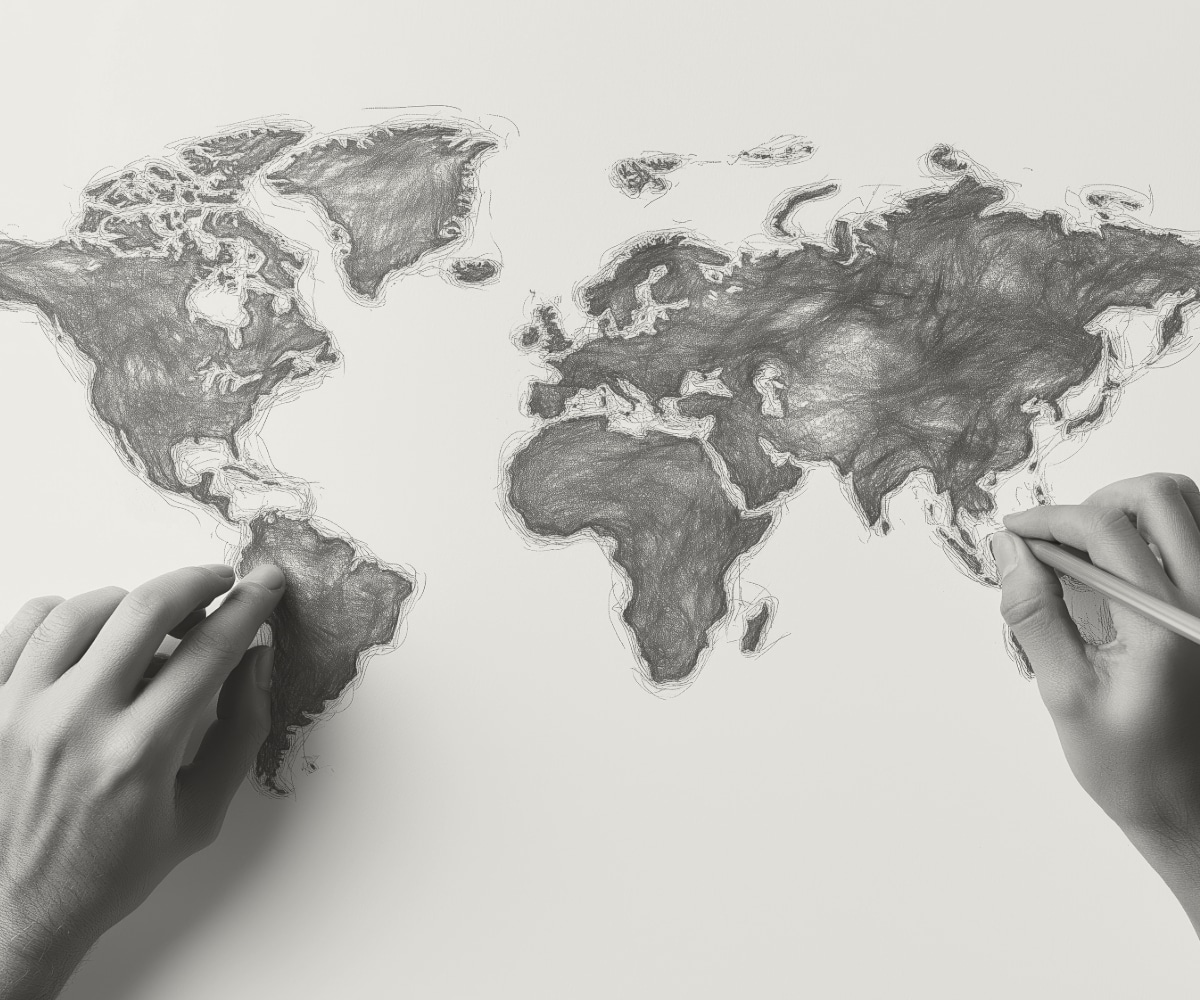Your cart is currently empty!
World Building With the Power of Illustration

in
Disclaimer: This post may contain affiliate links for books we recommend. If you make a purchase through these links, at no additional cost to you, we may earn a small commission. See our full Terms of Use here.
How do you build an incredible, realistic world? We’ve all heard the adage that if you can imagine it, you can create it. But what if that world doesn’t exist yet? What details should you include in your imaginary environment? A lot of writers, especially those that write sci-fi or fantasy stories, bring their worlds to life by creating vivid, real-life settings that are almost palpable to the reader. From the fantastical settings of epic fantasy novels to the gritty and realistic locations that populate mystery and thriller series, every story has its own world to explore. Even if the story isn’t taking place on Earth, it may still be helpful to have some real-world examples to draw inspiration from. We can achieve this through the use of illustration. If you’re not sure how to start, here are some tips and tools that you can use as you create your next fictional universe!
World Building Builds Consistency
We’ve all created a mood board or two to help gauge the theme of our works in progress and keep true to that theme throughout. But what if we could go one step further? What if we could visually represent our world as it would appear, not just for its characters, but for everywhere they interacted? While some people are fully confident that they can communicate their vision through describing the images in their heads alone, others believe there is an advantage in using images when creating a world from scratch. World building is one of the more difficult aspects when first starting out – perhaps even more so than plot building! And yet without it we’re limited in so many ways.
World building helps you make sure that your readers will never confuse where your scene takes place, no matter how long after it was last described. It puts emphasis on places and spaces within your story, highlighting them just as much as any character ever could. In short: a well-built world keeps your story focused and cohesive—something every writer should strive for!
Writing With Reference
When you’re looking to create a truly realistic setting for your work, one of your best tools is a physical object. The simple act of holding an object can spark ideas that would otherwise never have occurred to you. For example, if you’re writing about a famous location like Seattle, it helps to go there—or at least find some images or videos on YouTube or in books. You might see an image that sparks your imagination: what if my characters made a left turn here instead? What kind of restaurant would they be passing by? That sort of brainstorming is far more productive than simply trying to imagine how people live in Seattle because (as mentioned) fiction writers often use their imaginations as cloaks for lazy writing.
Modern day technology lets us roam the world virtually, seeing landscapes and skylines that we could only imagine before. Maybe you’re writing about a time when there were no cars or phones; if so, it helps to consult old maps or 19th century newspapers to get a sense of what those places were like. Some writers even build up detailed timelines with images depicting events as they happened on various days in history—this can be helpful for creating a certain mood or ambiance in your book. When the entirety of your world comes from you, those city skylines and sewer maps will have to come from you as well.
Sketching Can Help Create Realistic Settings
Many writers come up with interesting settings but don’t know how to capture their physical traits. By practicing world building through sketching, writers can create a cohesive visual setting that will pull their readers into new worlds. No matter what type of writing you’re doing or where you are in your career, sketching out your settings can help make your story more immersive. Even if you aren’t an artist, try it! It might surprise you how easy it is to pick up. Sketching forces you to focus on individual elements and really flesh out spaces.
As a bonus, when you create a sketch, you never have to worry about continuity or inconsistencies—everything exists in its own little bubble. And by taking time away from your computer screen and getting some fresh air outside (weather permitting!), sketches encourage better overall focus as well. Although fiction authors can use only one place for inspiration, combining real life places and fictional places into one cohesive location is also great practice. Besides giving your background visual dimensionality, incorporating non-fictional structures and architectural features makes it easier for readers to visualize actual structures they’ve seen before.
Keep it Loose
Remember that you’re sketching to write (unless you’ve planned a finished piece), so there is no need to include details you don’t intend to show the reader. The wood grain on a window sill may be of note – if so, sketch it in. It will be there when you need to reference the sketch while building your scenes. If it is of no importance, however, it is best not to sketch it in. The illustrations that you use for world building should be specific as reference, but not so detailed that they take away the focus from the parts of the scene that matter. Don’t spend too much time focusing on things that readers won’t see. Keep it loose!
A good visual storyteller doesn’t tell their audience what they can see—the audience makes inferences based on context clues and observation. Your sketches are not exact replicas of what you envision in your head; they are prompts designed to bring ideas to life. This works especially well with maps because they make it easy for writers to picture entire settings within a single glance. Many times a map can make all the difference between immersion and distraction – drawing an unfamiliar landscape helps establish setting at once.
Mapmaking For Immersive Worlds
For writers who want to create a realistic environment for their story, mapmaking is an excellent way to get a sense of your surroundings. Before you describe your setting, look at it: Get out some paper or open up Photoshop. Look at your plot points, how they’re laid out—and what’s between them. If you were walking through your world, how would you get from Point A to Point B? What sights would you see along the way? While it’s entirely possible (and often preferable) to let these details unfold organically as your plot progresses, writing them down beforehand can give a sense of consistency and realism that few readers will notice but that authors will appreciate.
You’ll have specific places to refer to if inspiration strikes in later scenes and you can be sure everything makes sense geographically, which may even help avoid pacing issues later on. In a story with magic or other fantastical elements, having a firm grasp of where things fit within our own reality can also help ground things more solidly in your audience’s mind. The work may not be so much about mapping cities as it is about mapping our minds. The more we think about how individuals navigate their environments and negotiate obstacles, both large and small, the better we’ll understand people as both individuals and members of larger communities with different needs, desires, expectations, hopes, dreams, etc.
Find Patterns Visually for Vivid Descriptions
As you mentally scan your setting, take a second to compare things. Note objects’ sizes, textures, shapes, orientation, and any defining characteristics or patterns they have. You don’t need to feel pressure to sketch each detail—just try to be observant! This exercise can help you find inspiration for descriptions later on. We all know that we can describe a room in one way (maybe two if it’s really nice) but imagine how much more detail you could add if you look for visual patterns. If you’re stumped on describing a location, just start drawing what stands out to you. You might notice certain shapes pop up repeatedly, like windows or doorways. Or there might be clusters of items in a particular part of town or building. These types of landmarks are important details. By consciously making these sorts of connections, you’ll be able to make your world seem deeper with less effort.
Also, because you’ve already been paying attention to these elements, when it comes time to write, you won’t waste time trying to figure out why some streets/buildings/rooms look similar/distinct from others. The key difference between creating words versus images is focus. When putting together an illustration of your environment, you pay closer attention than when just looking around on a normal day. Make sure not to fall into autopilot mode! Do not zone out while drawing; stay focused on noticing patterns around you. It may sound silly, but staying alert will give your illustrations character and make them useful tools for homing in on exact descriptions later down the line.
Fade Details For Lesser Objects
Just as we see in the real world, we give scenery in art less definition, less saturation, when in the background. The same should be true for your setting descriptions. Use your sketch to help identify who and what is in the forefront – and give them the detail to show it. Make sure you keep yourself from getting carried away with details though – otherwise you could end up with a real mess on your hands (figuratively speaking). Instead, focus on only one or two of your characters at a time. If all else fails and you’re still having issues describing things correctly, ask someone else to look over it for you! Even if they’re not an artist themselves, most people can pick out those problems fairly easily and that should be enough information for you to solve your own dilemma!
While each author will take their own approach to world building and how it pertains to the story they want to tell, it’s fair to say that no story would exist without it. However, just because world building is an integral part of every book does not mean that all authors create immersive and dynamic worlds. The world of writing can be dry and boring if your story takes place in an uninspired setting. It’s hard to create an interesting character, plot, or story line when you have nothing but own imagination to work with. So why not take advantage of the wealth of details waiting just outside of your focus with illustration?
-C.B.

